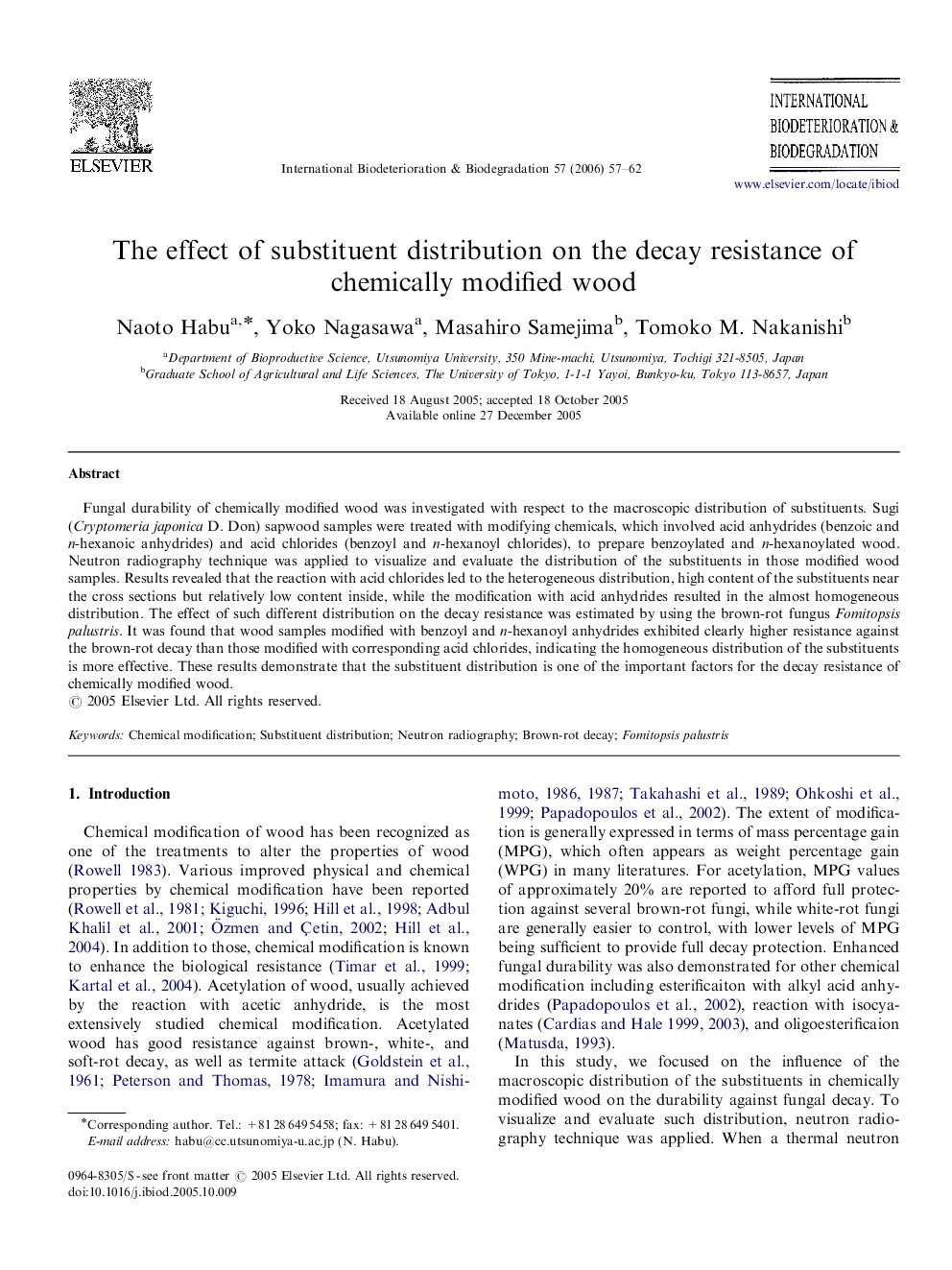| کد مقاله | کد نشریه | سال انتشار | مقاله انگلیسی | نسخه تمام متن |
|---|---|---|---|---|
| 4366106 | 1301820 | 2006 | 6 صفحه PDF | دانلود رایگان |

Fungal durability of chemically modified wood was investigated with respect to the macroscopic distribution of substituents. Sugi (Cryptomeria japonica D. Don) sapwood samples were treated with modifying chemicals, which involved acid anhydrides (benzoic and n-hexanoic anhydrides) and acid chlorides (benzoyl and n-hexanoyl chlorides), to prepare benzoylated and n-hexanoylated wood. Neutron radiography technique was applied to visualize and evaluate the distribution of the substituents in those modified wood samples. Results revealed that the reaction with acid chlorides led to the heterogeneous distribution, high content of the substituents near the cross sections but relatively low content inside, while the modification with acid anhydrides resulted in the almost homogeneous distribution. The effect of such different distribution on the decay resistance was estimated by using the brown-rot fungus Fomitopsis palustris. It was found that wood samples modified with benzoyl and n-hexanoyl anhydrides exhibited clearly higher resistance against the brown-rot decay than those modified with corresponding acid chlorides, indicating the homogeneous distribution of the substituents is more effective. These results demonstrate that the substituent distribution is one of the important factors for the decay resistance of chemically modified wood.
Journal: International Biodeterioration & Biodegradation - Volume 57, Issue 1, January 2006, Pages 57–62